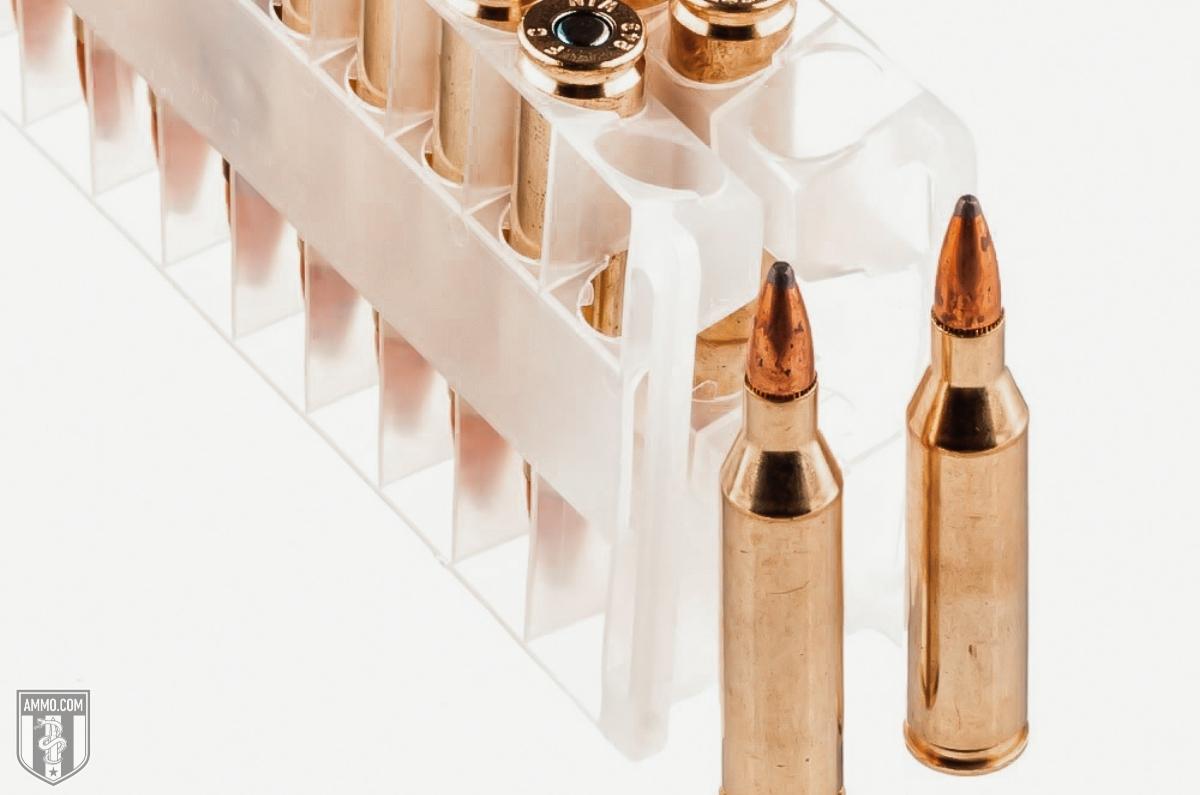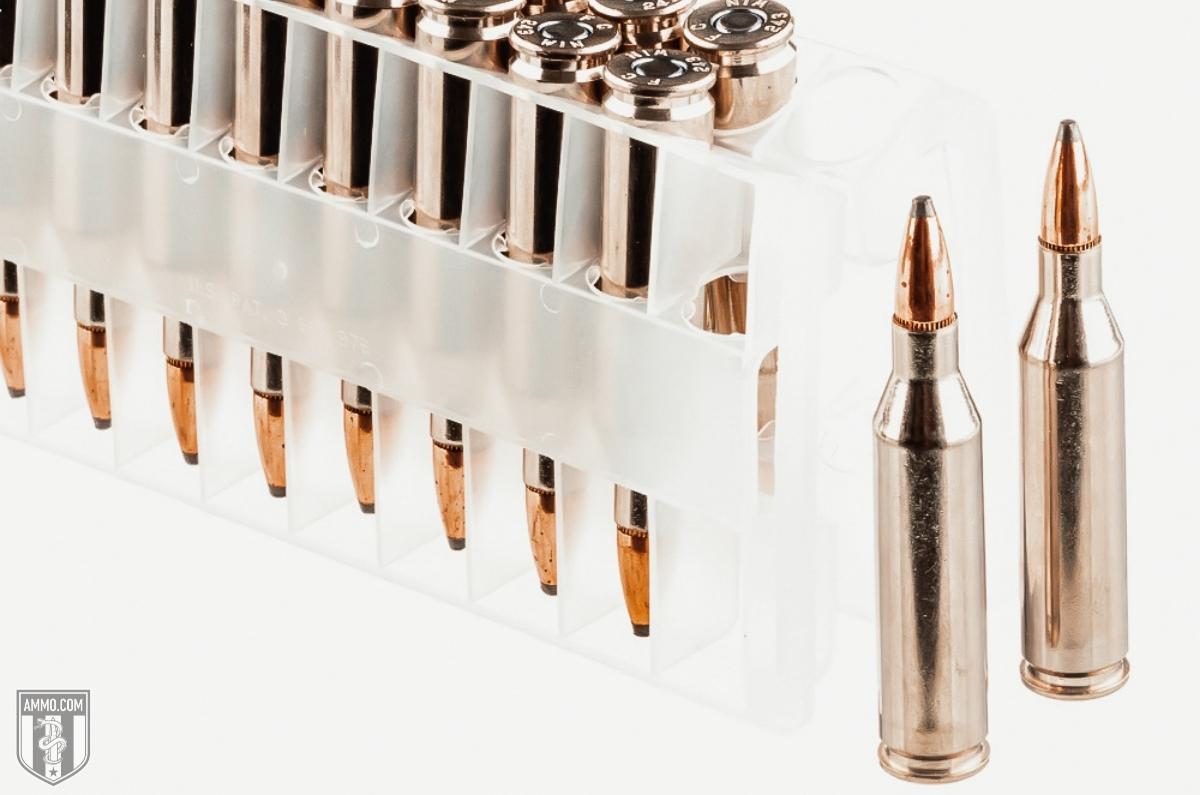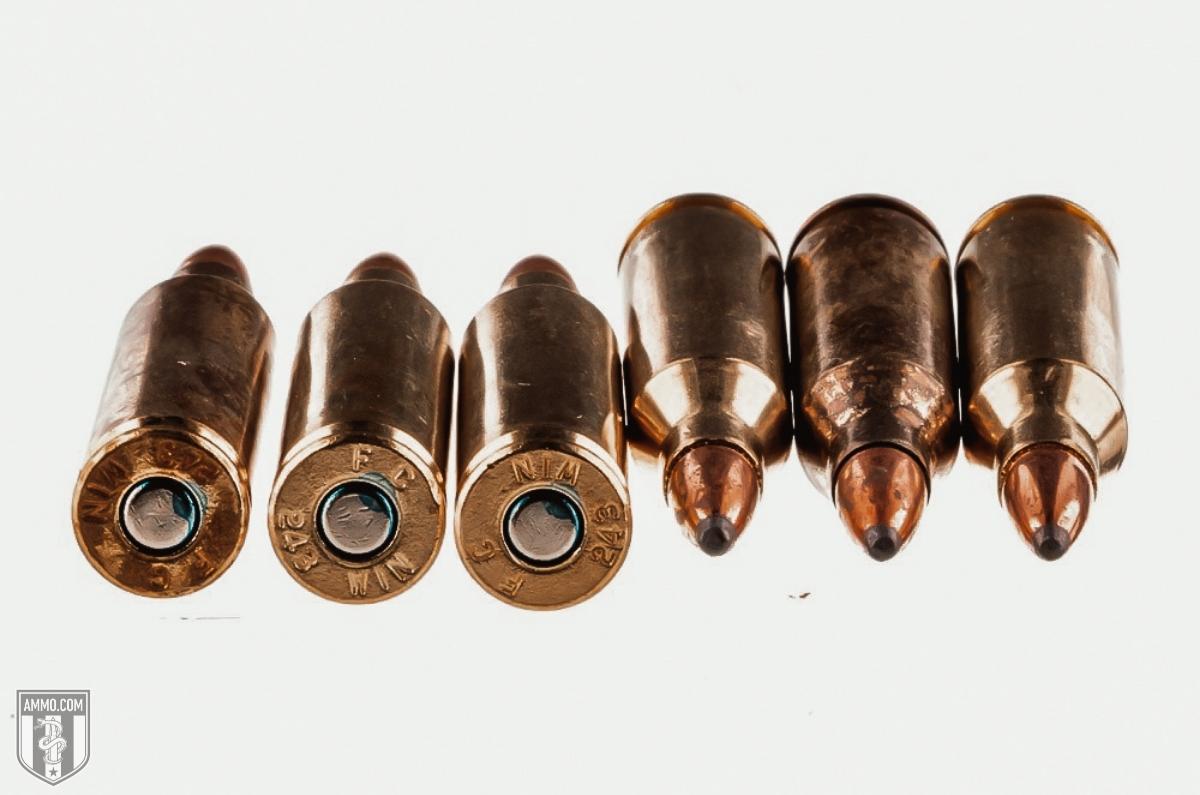6mm ARC vs 243: The Low Recoil Rifle Rounds
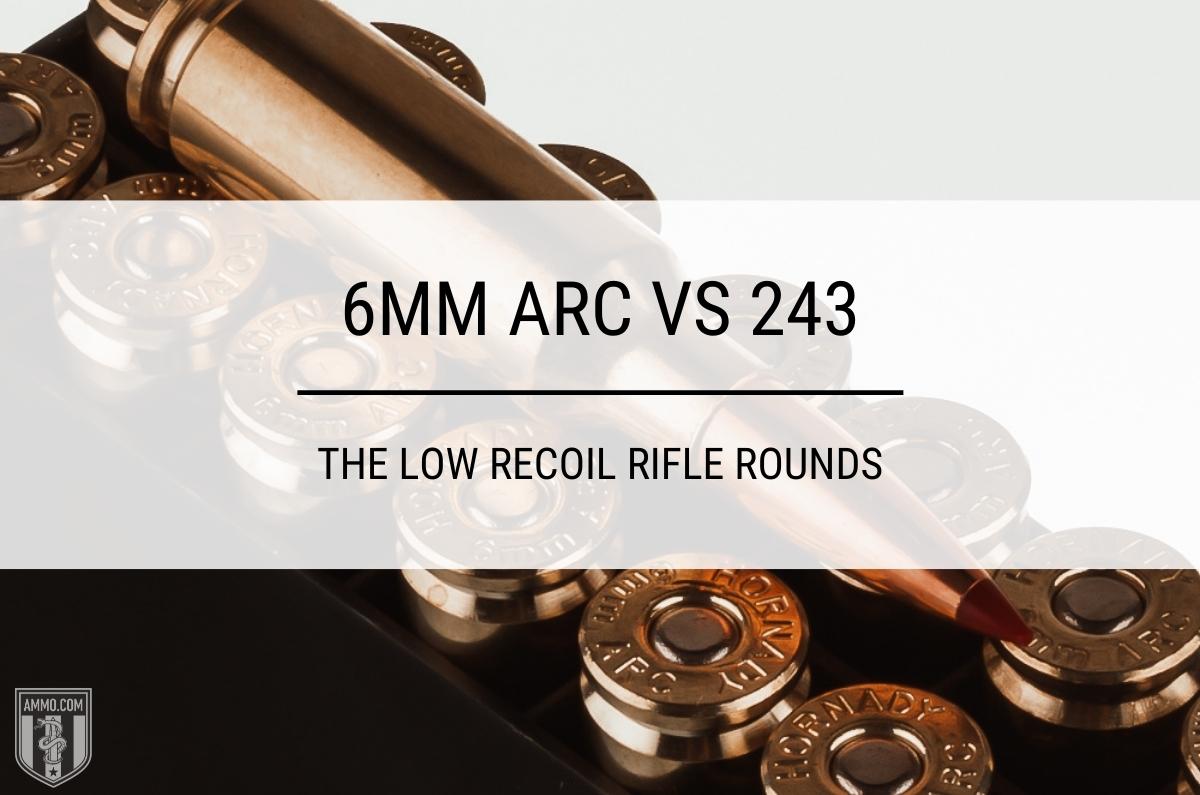
If you're looking to introduce someone to shooting or hunting, it's a great idea to begin your search by comparing the 6mm ARC vs 243 Winchester.
These rounds are eerily similar, which means some will argue it doesn't matter which one you choose.
I beg to differ. It matters depending on your intended purpose. Each caliber outshines the other in certain situations, as we'll see shortly.
6mm ARC vs 243
We're comparing each caliber in nine different categories. We'll tally up the winner of each category and decide on a winner at the end of the article.
First, let's begin with the cartridge similarities and differences.
Cartridge Specs
The bullet diameter of each caliber is the same at .243".
The rim diameter of the 6mm ARC is 0.441 inches, while the 243 is slightly larger at 0.471 inches.
The 243 has a case length of 2.045" compared to the 1.49" of the 6mm cartridges. This increased size means the 243 has a case capacity of 53-54.8 gr H2O.
The overall length of the 6mm ARC is 2.26 inches which is almost half an inch shorter than the 243 Winchester, which is 2.7098" in length.
The SAAMI max pressure for the 243 is 60,000 psi.
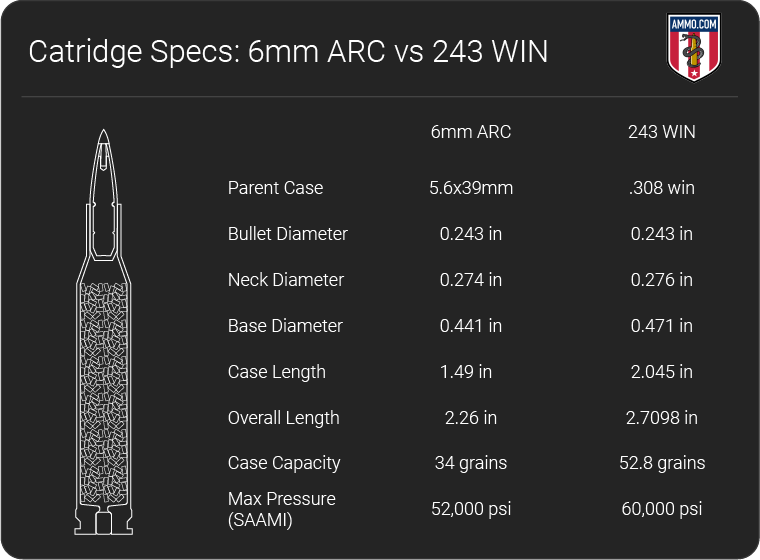
So how do these two cartridges perform when shooting the same bullet?
Let's find out!
243 Winchester Recoil vs 6mm ARC Recoil
These calibers are often the first choice for introducing new shooters to the excitement of shooting and hunting because of the low recoil.
Less recoil makes it easier for inexperienced shooters to be more accurate because they will be less likely to flinch due to anticipating the kick of the gun when they squeeze the trigger.
Recoil is primarily determined by gun weight, bullet weight, and the amount of powder in the case.
Felt recoil will vary from shooter to shooter, depending on how well they shoulder the firearm.
The 6mm ARC has less than 9-foot-pounds of recoil, while the 243 has 11 ft-lbs of force.
While the average shooter won't be able to tell much of a difference between the two, the 6mm ARC has slightly less recoil earning it the win in the category.
Trajectory
We call the flight path of the bullet the trajectory. It's an arch due to the effects of gravity.
While the trajectory of most bullets begins flat, as it slows down, the bullet starts to drop faster and faster.
Most shooters prefer a flatter trajectory, and I say most because there's always someone who just has to be different for the sake of being different.
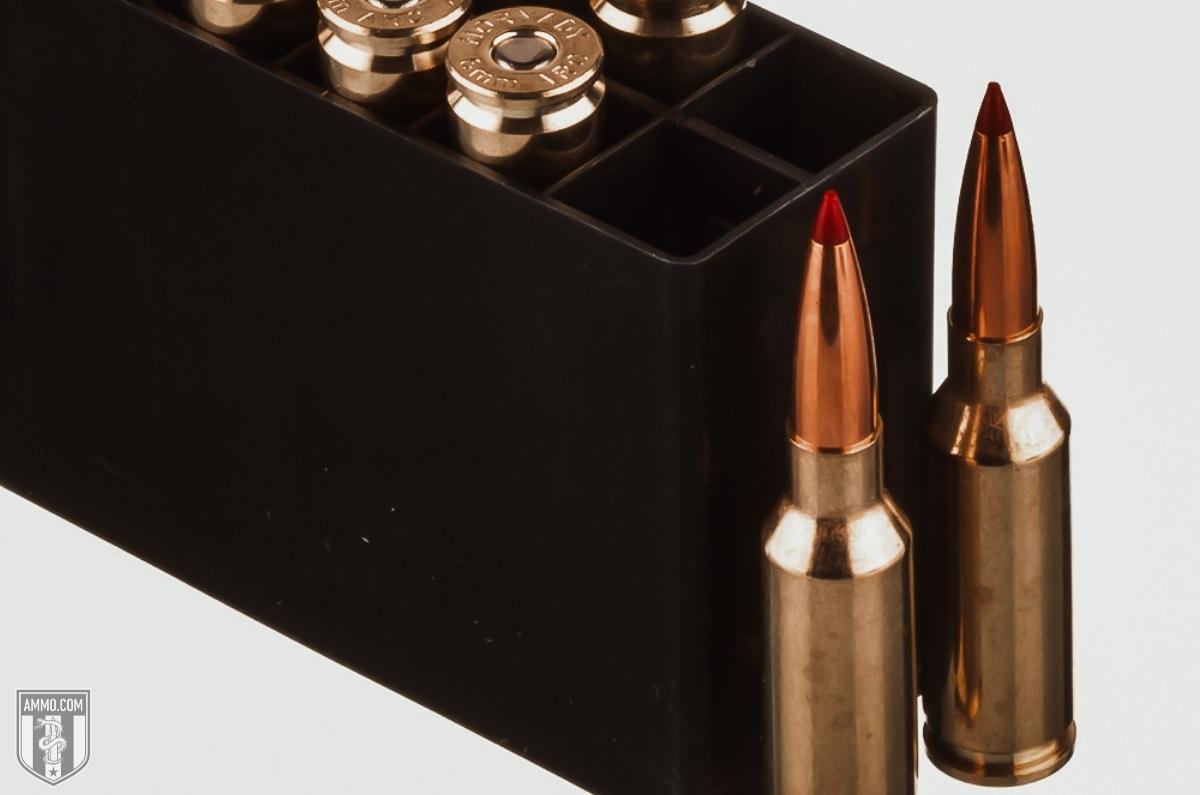
Gravity will affect lighter-weight bullets traveling at higher velocity (FPS) less than heavier bullets traveling slower, which will give them a flatter trajectory.
Since these calibers shoot the same-sized bullets, the bullet velocity will be the primary determining factor for how flat each round will shoot.
The 243 Winchester has more case capacity, which means it holds more powder; therefore, it can propel the bullet faster, which translates to a flatter trajectory.
At 400 yards, the 6mm ARC has an average bullet drop of 22.2 inches, while the 243 Winchester has an average of 18 inches of bullet drop at that distance.
The bullet weight will vary your results, so these numbers are not exact; they are to give you an idea of how each caliber generally performs.
These calibers can be suitable for long-distance shooting, but they often lack the power to stay supersonic past 700 yards, which will negatively impact their trajectory past this distance.
The 243 Winchester ammo is a flatter shooting round, which means it's the winner of this section.
6mm ARC vs 243 Winchester Accuracy
The accuracy of a round is difficult to calculate because so many factors go into it.
The primary factors are the rifle, barrel length, barrel twist rate, shooter, and weather conditions.
Felt recoil and bullet trajectory are two others we will use to determine a winner for the article's sake.
Both rounds are considered very accurate and beloved by many shooters because of their ability to be precise reliably out to 400 yards.
However, the 6mm ARC has slightly less recoil, so shooters susceptible to felt recoil will find it easier to be more accurate with the 6mm ARC.
With that said, the 243 Winchester has a flatter trajectory, so shooters who need to maximize distance will prefer the 243.
This category is tied because each caliber is accurate and outshines the other in certain conditions.
Ballistic Coefficient
The ballistic coefficient (BC) represents how well a bullet resists air/wind.
It's a measure of bullet aerodynamics. A high BC is preferred and means the bullet will better resist the wind.
Calculating BC is rather complicated and irrelevant for this article; however, heavier projectiles typically have a higher ballistic coefficient than lighter bullets.
Since both calibers shoot the same bullets, the ballistics coefficient will be similar but not the same since they have differing velocities.
The 243 has an average BC of 0.34, which isn't all that impressive considering the 6mm ARC has a BC as high as .536.
The winner of this section is the 6mm ARC with its high-BC bullets.
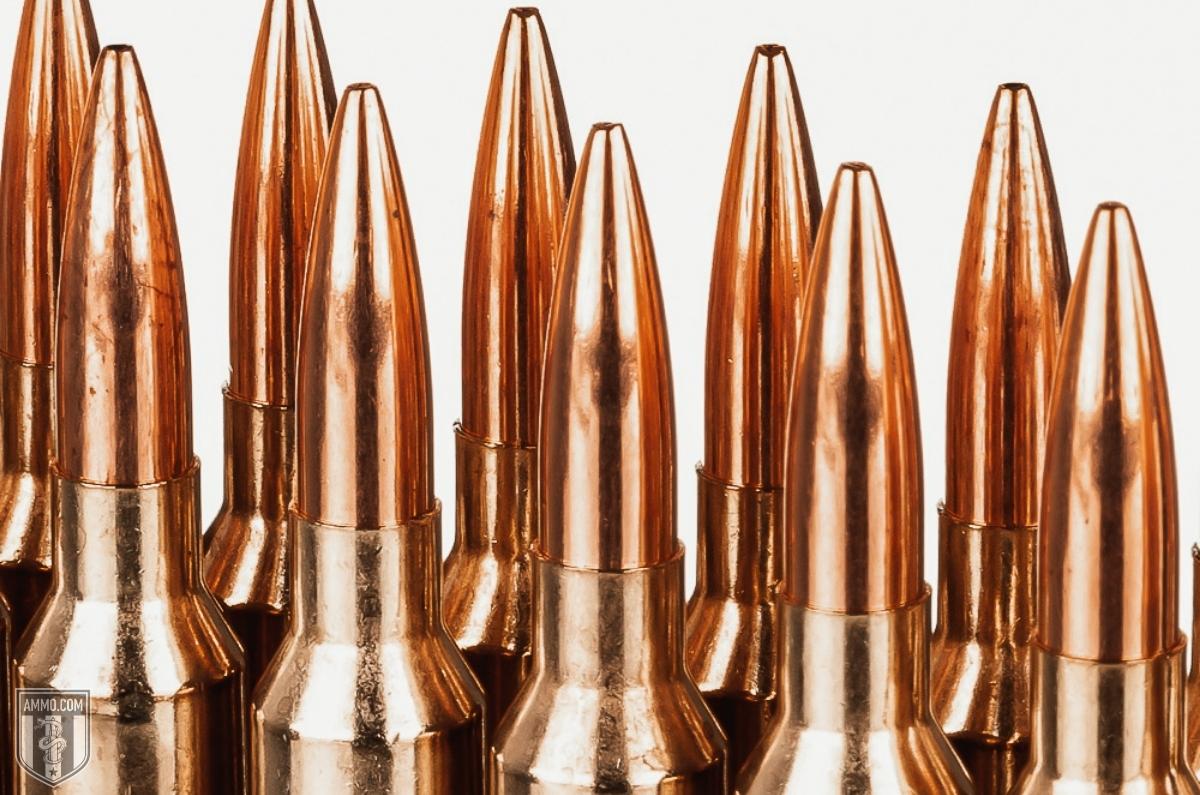
243 vs 6mm ARC Stopping Power
Stopping power is a relative term, and many argue it doesn't matter if you have a well-placed shot.
I agree it matters less for well-placed shots, but no matter how prepared we are as shooters, not every pull of the trigger is a well-placed shot.
This is why I believe stopping power still matters.
Stopping power can be measured in how big of a hole the bullet leaves and how well it penetrates the target.
Sectional Density (SD) measures how well a bullet penetrates a target.
This is incredibly important for big game hunting because you need a bullet to get through thick hide, bone, and sinew.
Sectional density is calculated by comparing the bullet weight and the bullet diameter.
The higher the number, the better it will penetrate the target.
However, there are other factors we must consider in terms of SD outside the shape of the bullet: velocity and bullet design.
Two bullets that weigh the same while traveling at different velocities will have different stopping power or penetration amounts.
The one with the higher velocity will penetrate deeper.
Bullet design also plays a role because non-expanding bullets penetrate deeper but won't leave a large wound channel.
While expanding, bullets like the Hornady SST or Nosler Ballistic Tip expand on impact, causing a large wound channel but won't penetrate as deep.
This is why there is often a compromise between penetration and bullet expansion when ammo manufacturers create hunting cartridges.
243 varmint rounds (55gr - 70-grain bullets) will have an SD of 0.14, while the larger bullets for deer hunting (80gr - 100-grain bullets) will have an SD of 0.24.
A 6mm ARC 103 gr hunting round has an SD of .249, and the 108 gr match round has an SD of .261.
The stopping power of each caliber is very similar. That's why many hunters use either caliber for deer hunting.
The 6mm ARC has a slight advantage in sectional density; however, the average deer hunter won't notice a difference.
Hunting
Hunting is where both rounds fulfill the same purpose. Neither round can ethically harvest big game like elk, caribou, moose, or bear.
However, they both excel when varmint hunting and deer hunting.
Since most shots will take place within 400 yards, each caliber has the power to bring down deer or antelope at that range.
The primary concern with using either round for deer hunting is they're not legal in the states that only allow a straight-walled cartridge for deer hunting.
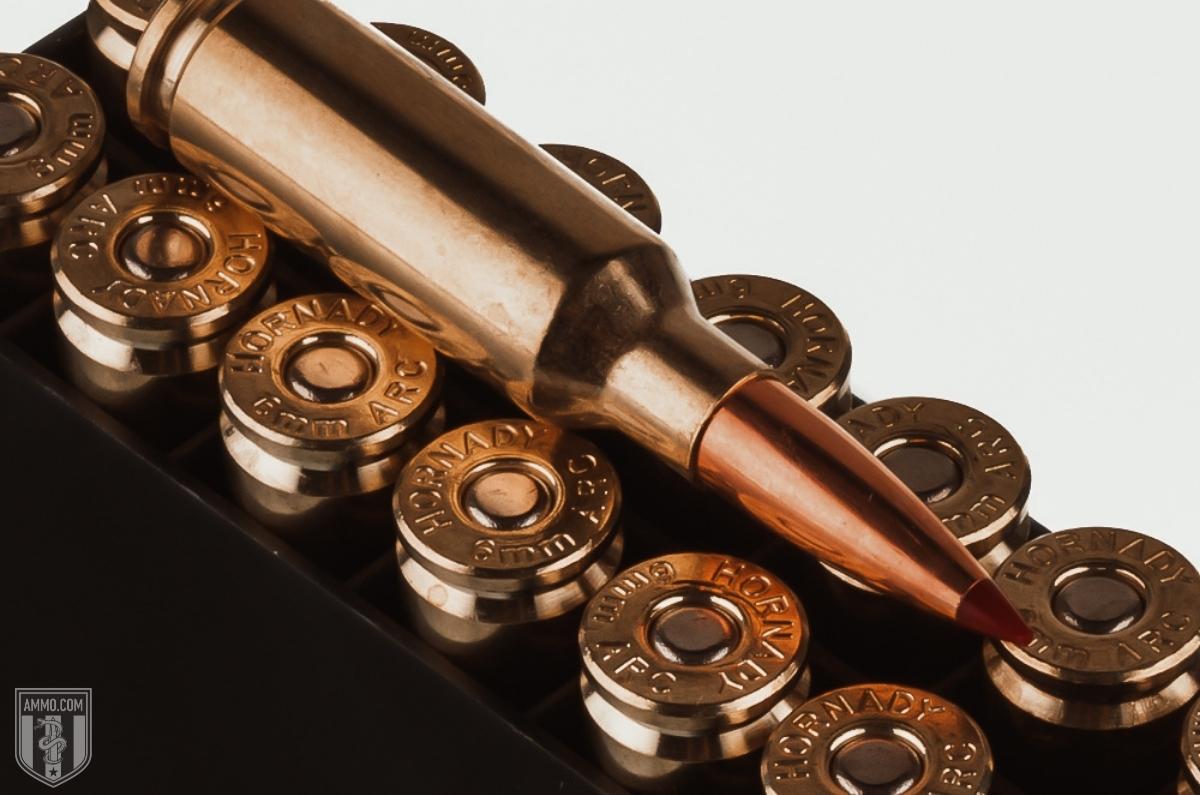
Both calibers are accurate and easy enough on the shoulder to send round after round downrange while varmint hunting.
This section is a tie because both calibers can be used successfully for the same hunting purposes.
Home Defense: 6mm ARC vs 243
I'm not a big believer in using a rifle for home defense.
The primary reason is the increased likelihood of overpenetration. Instead, I'd rather use a shotgun chambered in 12ga or 20ga buckshot.
However, that doesn't mean you can't or shouldn't use these calibers to protect your home if they're all you have available.
If I had to choose a home defense gun chambered in only one of these two calibers, I would choose the 6mm ARC.
That's because the 6mm ARC was designed for the AR-15 platform.
So, if it's legal in your state, you can have a semi-automatic rifle with a 30-round magazine, which means less reloading and more opportunities to eliminate the threat.
Most guns chambered in 243 Winchester will be bolt-action rifles, which are not the ideal candidate for self-defense.
The 6mm ARC wins this category compared to the 243, but better home defense options exist.
Ammo Cost & Availability
The 243 has been around for many years, so numerous ammo manufacturers such as Federal, Hornady, Remington, Nosler, Barnes, Browning, and of course Winchester make 243 ammo.
This means you can find decent deals on it, but the good stuff is not cheap like all other ammo.
Federal hunting ammunition will cost you about $1.75 per round. At the same time, Hornady 95-grain SST will cost $2.75 for each trigger pull.
Since the 6mm ARC has only been around for a few years, there are not many ammunition manufacturers who make it.
Hornady is the company that developed the round and is the primary ammo manufacturer.
This means 6mm ARC ammo prices won't be any cheaper than 243 ammo, but surprisingly they're no more expensive.
6mm ARC 103-grain ELD-X Hornady Precision Hunter rounds will cost $2.75 with each trigger pull.
The 243 Winchester has a slight advantage over the 6mm ARC in this section because of its availability.
Rifle Cost & Availability
Nearly every firearms manufacturer makes a rifle chambered in 243.
Some of the most popular are-
- Browning BLR lever action
- CZ Model 557 American
- Ruger Hawkeye
 Remington 700
Remington 700- Winchester Model 54
- Savage 110 Hunter
While the prices vary, you can still expect to pay $700 or more for the rifles above. If you're looking for a budget option around $500, try the Savage Axis, Ruger American, and Mossberg Patriot.
The 6mm ARC isn't chambered in nearly as many rifles, and the ones it is chambered in are generally more expensive than ones chambered for 243 Winchester.
A quality 6mm ARC rifle will cost around $1,400, double that of a 243 bolt gun.
The 243 Winchester wins this round because it's available in more options and cheaper.
Reloading the 243 Winchester vs 6mm ARC
The best way to control the controllable variables and maximize your budget is by reloading ammo.
You can craft the ammo that cycles through your rifle the best because handloading allows you to dial in the details that factory loads don't.
The 243 Winchester has been reloaded for decades and is still a popular caliber for reloaders.
This is good and bad. It's good because many companies make the supplies you'll need like primers, brass, powder, bullets, and dies. It's bad because supplies will run low quickly in times of shortages.
The 6mm ARC is still a new caliber, but a few companies make the needed reloading supplies, and the information to properly reload this caliber is available.
However, the 243 wins this round because more information is available and supplies are much easier to find.
Ballistics
The ballistic performance of each caliber will depend on which manufacturer you use and your rifle, so use these ballistics as a general idea. They're not to be taken as gospel.
6mm ARC Ballistics
Due to the 6mm ARC being new, there is limited ballistic information available. However, I found some for the Hornady Precision Hunter 6MM ARC 103 Grain Extremely Low Drag-eXpanding rounds.
- Bullet Weight: 103 Grain
- Muzzle Velocity: 2800 fps
- Muzzle Energy: 1793 ft-lbs
Check out these Hornady Ballistic Calculators for more ballistic information.
243 Winchester Ballistics
Note: This information comes from the manufacturer and is for informational purposes only. The actual ballistics obtained with your firearm can vary considerably from the advertised ballistics. Also, ballistics can vary from lot to lot with the same brand and type load.
| 243 Bullet WEIGHT | Muzzle VELOCITY (fps) | Muzzle ENERGY (ft. lbs.) | TRAJECTORY (in.) | |||||||||||
|---|---|---|---|---|---|---|---|---|---|---|---|---|---|---|
| Muzzle | 100 yds. | 200 yds. | 300 yds. | 400 yds. | Muzzle | 100 yds. | 200 yds. | 300 yds. | 400 yds. | 100 yds. | 200 yds. | 300 yds. | 400 yds. | |
| 55 Grain | 4025 | 3597 | 3209 | 2853 | 2525 | 1978 | 1579 | 1257 | 994 | 779 | 0.6 | 0 | -4 | -12.2 |
| 55 Grain WSSM | 4060 | 3628 | 3237 | 2880 | 2550 | 2013 | 1607 | 1280 | 1013 | 794 | 0.6 | 0 | -3.9 | -12 |
| 58 Grain | 3925 | 3465 | 3052 | 2676 | 2330 | 1984 | 1546 | 1200 | 922 | 699 | 0.7 | 0 | -4.4 | -13.8 |
| 60 Grain | 3600 | 3110 | 2660 | 2260 | 1890 | 1725 | 1285 | 945 | 680 | 475 | 2 | 1.8 | -3.3 | -15.5 |
| 70 Grain | 3400 | 3020 | 2672 | 2350 | 2050 | 1797 | 1418 | 1110 | 858 | 653 | 0 | -2.5 | -9.7 | n/a |
| 70 Grain | 3400 | 3040 | 2700 | 2390 | 2100 | 1795 | 1435 | 1135 | 890 | 685 | 1.1 | 0 | -5.9 | -18 |
| 75 Grain | 3350 | 2955 | 2593 | 2259 | 1951 | 1993 | 1551 | 1194 | 906 | 676 | 2 | 0.9 | -5 | -19 |
| 80 Grain | 3350 | 2955 | 2593 | 2259 | 1951 | 1993 | 1551 | 1194 | 906 | 676 | 2 | 0.9 | -5 | -19 |
| 80 Grain | 3425 | 3081 | 2763 | 2468 | 2190 | 2984 | 1686 | 1357 | 1082 | 852 | 1.1 | 0 | -5.7 | -17.1 |
| 80 Grain Superformance | 3425 | 3080 | 2760 | 2463 | 2184 | 2083 | 1684 | 1353 | 1077 | 847 | 1.1 | 0 | -5.7 | -17.1 |
| 85 Grain | 3320 | 3070 | 2830 | 2600 | 2380 | 2080 | 1770 | 1510 | 1280 | 1070 | 2 | 1.2 | -4 | -14 |
| 87 Grain | 2800 | 2574 | 2359 | 2155 | 1961 | 1514 | 1280 | 1075 | 897 | 743 | 1.9 | 0 | -8.1 | -23.8 |
| 90 Grain | 3120 | 2871 | 2635 | 2411 | 2199 | 1946 | 1647 | 1388 | 1162 | 966 | 1.4 | 0 | -6.4 | -18.8 |
| 95 Grain | 3185 | 2908 | 2649 | 2404 | 2172 | 2140 | 1784 | 1480 | 1219 | 995 | 1.3 | 0 | -6.3 | -18.6 |
| 95 Grain WSSM | 3250 | 3000 | 2763 | 2538 | 2325 | 2258 | 1898 | 1610 | 1359 | 1140 | 1.2 | 0 | -5.7 | -16.9 |
| 100 Grain | 2960 | 2697 | 2449 | 2215 | 1993 | 1945 | 1615 | 1332 | 1089 | 882 | 2.5 | 1.2 | -6 | -20 |
| 100 Grain Light Magnum | 3100 | 2839 | 2592 | 2358 | 2138 | 2133 | 1790 | 1491 | 1235 | 1014 | 1.5 | 0 | -6.8 | -19.8 |
| 100 Grain WSSM | 3110 | 2838 | 2583 | 2341 | 2112 | 2147 | 1789 | 1481 | 1217 | 991 | 1.4 | 0 | -6.6 | -19.7 |
| 105 Grain | 2920 | 2689 | 2470 | 2261 | 2062 | 1988 | 1686 | 1422 | 1192 | 992 | 2.5 | 1.6 | -5 | -18.4 |
6mm ARC History & Development
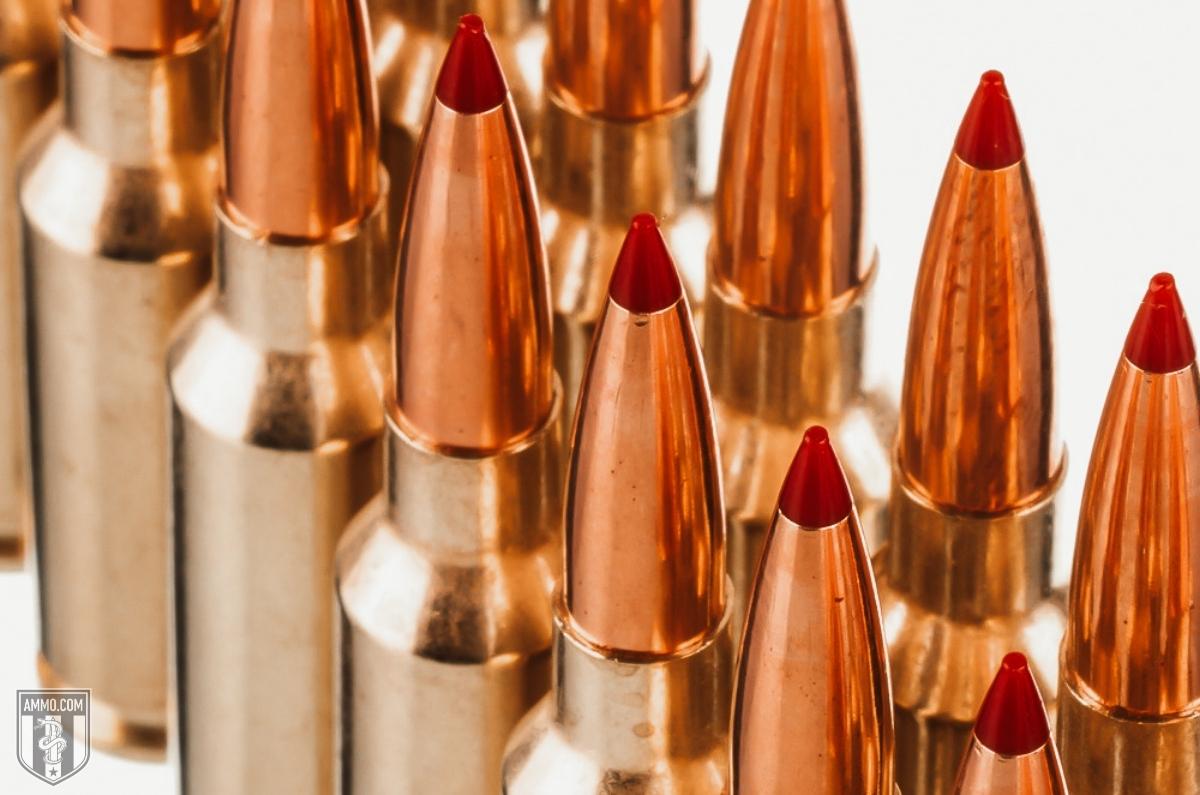
The 6mm Advanced Rifle Cartridge (ARC) is a new cartridge by Hornady in 2020.
The designers of the 6ARC wanted to create a round that would compete with the famous 223/5.56 in an AR platform, but it needed to shoot flatter at long-range.
That's why they chose the 6mm bullet.
It's based on the .220 Russian, like the 6.5 Grendel, which is why they're very similar rounds when you compare the 6mm ARC vs 6.5 Grendel.
So far, it's lived up to the hype, but it has a long way to go to catch the 223 Rem or 5.56 x 45mm NATO.
243 History & Development
In 1955 the 243 Win was introduced to the civilian market.
Its parent case is the 308 Win that's been necked down to accept .243" bullets.
This caliber exploded in popularity among varmint and deer hunters because of its low recoil and adequate stopping power for hogs, whitetail deer, mule deer, pronghorn, and antelope.
It's still one of the market's most popular deer hunting calibers and will continue to be in the foreseeable future.
Parting Shots: 6mm ARC vs 243 Winchester
Even though these two calibers are used for similar purposes, there are apparent differences when we compare the 6mm ARC vs 243 Win side by side.
Neither round outperformed the other, winning 4/10 categories and tying in the other two sections.
The Hornady 6mm ARC has less recoil, a higher ballistic coefficient, more stopping power, and is chambered in a better home defense weapon.
If you are looking for other options, don't forget to check out our Hornady 243 ammo page.
The 243 Win has a flatter trajectory, has more guns and ammo available, and is easier to reload.
They're both very accurate rounds and can be used to hunt varmints and mid-sized game such as deer.
Ammo Comparisons
- .308 vs 5.56
- 6.5 Creedmoor vs .308
- .300 Blackout vs .308
- .300 Win Mag vs .308
- .243 vs .308
- .308 vs .30-06
- 7mm-08 vs .308
- .270 vs .308
- 7.62x39 vs .308
- .223 vs .308
- .338 Lapua vs .308
- .380 ACP vs 9mm
- .223 vs 5.56
- .300 Blackout vs 5.56
- 9mm vs 45 ACP
- 9mm vs 40 S&W
- .357 SIG vs 9mm
- 10mm vs 9mm
- 9mm vs 9mm Luger
- .243 vs .270
- .300 Win Mag vs .30-06
- .270 vs .30-06
- .40 vs .45
- 38 Special vs 357
- 9mm vs 40 vs 45
- 5.56 vs 7.62x39
- 338 Lapua vs .30-06
- .30-30 vs .30-06
- 300 PRC vs 338 Lapua
- .30-06 vs 7mm
- 300 Win Mag vs 338 Lapua
- 300 PRC vs 300 Win Mag
- 300 WSM vs 300 Win Mag
- 338 Win Mag vs 338 Lapua
- 12 Gauge vs 20 Gauge
- 10mm vs 357 Mag
- .30-30 vs 7.62x39
- 224 Valkyrie vs 22-250
- 17 HMR vs 22 Mag
- 7.62x39 vs .300 Blackout
- 45 ACP vs 45 Auto
- 45-70 vs 30-30
- 300 Blackout vs 223
- 357 Magnum vs 9mm
- 350 Legend vs 300 Blackout
- 224 Valkyrie vs 223
- 45 ACP vs 38 Super
- 6.5 Grendel vs .308
- 17 HMR vs 22 LR
- 10 Gauge vs 12 Gauge
- 22-250 vs 223
- 45 Colt vs 45 ACP
- 350 Legend vs 30-30
- 5.7x28 vs 223
- 5.7 vs 9mm
- 5.56 vs 5.7
- 22 vs 9mm
- Buckshot vs Birdshot
- 450 Bushmaster vs 308
- 450 Bushmaster vs 223
- Buckshot vs Slug
- 6.5 Grendel vs 5.56 vs 223
- 6mm ARC vs 6.5 Grendel
- 44 vs 45
- 458 SOCOM vs 5.56
- 357 vs 44
- 32 ACP vs 380
- 300 Win Mag vs 338 Win Mag vs 338 Lapua Mag
- 450 Bushmaster vs 458 SOCOM vs 50 Beowulf
- 6mm Creedmoor vs 6.5 Creedmoor
- TMJ vs FMJ
- 44 Special Vs 44 Magnum
- 45 90 vs 45 70
- 6.8 Western vs 6.8 SPC
- 50 Beowulf vs 50 BMG
- 26 Nosler vs 6.5 PRC
- 28 Gauge vs 410
- 6.8 SPC vs 5.56
- 6.8 SPC vs 6.5 Grendel
- 6.8 Western vs 7mm Rem Mag vs .28 Nosler
- 6.8 Western vs 6.5 Creedmoor
- 22 Hornet vs 223
- 6.8 Western vs 6.5 PRC
- .410 vs 12 Gauge
- .410 vs 20 Gauge
- 22 LR vs 22 Mag
- 6mm ARC vs 243
- 7mm-08 vs 270
- 243 vs 6.5 Creedmoor
- Nickel vs Brass Casing
- 204 Ruger vs 223
- 50 Beowulf vs 5.56
- 260 Remington vs 6.5 Creedmoor
- 6mm Remington vs 243
- 28 Nosler vs 300 PRC
- 50 Beowulf vs 50 AE
- 22 Nosler vs 22-250
- 450 Marlin vs 45-70
- 300 Win Mag vs 300 Norma
- 458 SOCOM vs 300 Blackout
- 38-55 vs 45-70
- 22 Hornet vs 22 LR
- 300 Norma vs 338 Lapua
- 338 Lapua vs 50 BMG
- 28 Nosler vs 300 Win Mag
- 28 Nosler vs 6.5 Creedmoor
- 204 vs 22-250
- 458 SOCOM vs 45 70
- 44 40 vs 45 70
- 6.8 SPC vs 6.5 Creedmoor
- 450 Bushmaster vs 30-06
- 7mm Rem Mag vs 300 Win Mag
- 30 Carbine vs 223
- 25-06 vs 30-06
- 26 Nosler vs 28 Nosler
- 16ga vs 12ga
- 30 06 vs 7.62 x54R
- 9mm Makarov vs 9mm Luger
- 350 Legend vs 223
- 30 Carbine vs 5.56
- 6.5x55 vs 6.5 Creedmoor
- 6.5 Creedmoor vs 270 vs 25-06
- M193 vs M855
- 450 Bushmaster vs 458 SOCOM
- 6.5 Grendel vs 6.5 Creedmoor
- 350 Legend vs 5.56
- .277 Fury vs 6.8 SPC
- 277 Fury vs 300 Win Mag
- 10mm vs .45 ACP
- 277 Fury vs 223
- 6.8 SPC vs 300 Blackout
- 6.5 PRC vs 6.5 Creedmoor
- 277 Fury vs 308
- 277 Fury vs 6.5 Creedmoor
- 350 Legend vs 450 Bushmaster
- 277 Fury Vs 5.56 NATO
- 10mm vs 40S&W
- 32 ACP vs 9mm
- 32 Special vs 9mm
- 8.6 Blackout vs 300 Blackout
- 30 Super Carry vs. 9mm
- 5.56 vs 9mm
- .50 Action Express vs 9mm
- 7.62x25 vs. 9mm
- 10mm vs 44 Magnum
- 300 Blackout vs 300 Win Mag
- 6.5 Grendel vs 300 Blackout
- 460 Rowland vs 10mm
- 300 RUM vs 300 PRC
- 300 Norma vs 300 PRC
- 45 GAP vs 45 ACP
- 7mm PRC vs 300 Win Mag
- 300 PRC vs 6.5 Creedmoor
- 300 PRC vs 308
- 357 SIG vs 357 Mag
- 7.62x39 vs 7.62x51
- 243 Win vs 223 Rem
- 30 Nosler vs 300 PRC
- 6.5 Creedmoor vs. 30-06 Springfield
- 450 S&W vs. 44 Magnum
- 6.5 Creedmoor vs. 300 Win Mag
- 454 Cassull vs. 45-70 Govt
- 454 Cassull vs. 44 Mag
- 7.62x54r vs. 308 Winchester
- 22 ARC vs. 223 Rem
- Subsonic vs. Supersonic Ammo

